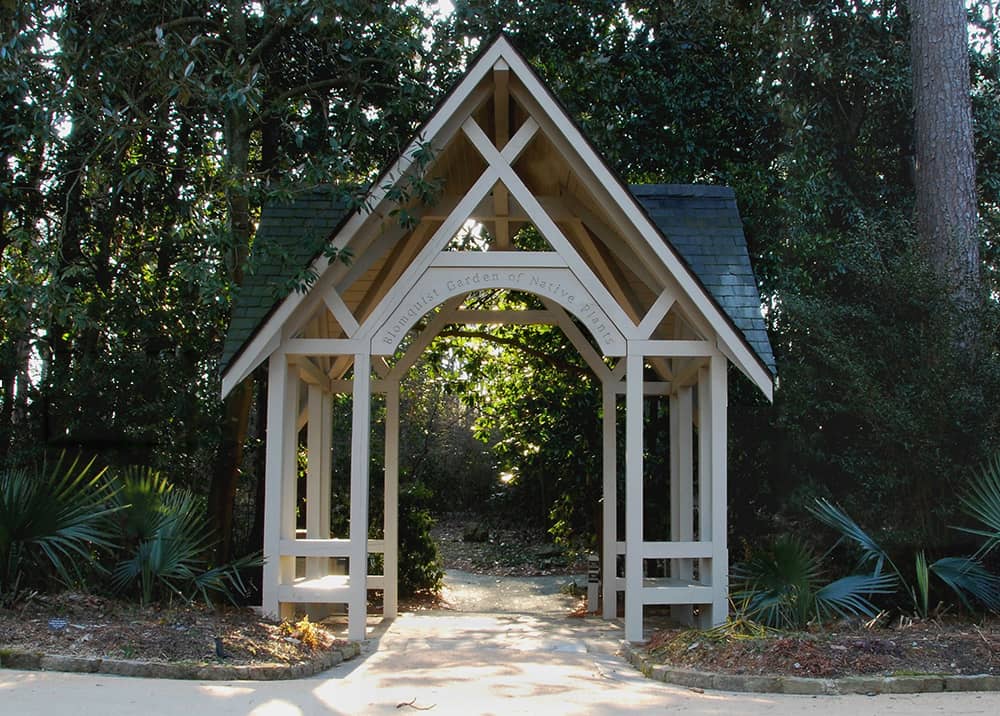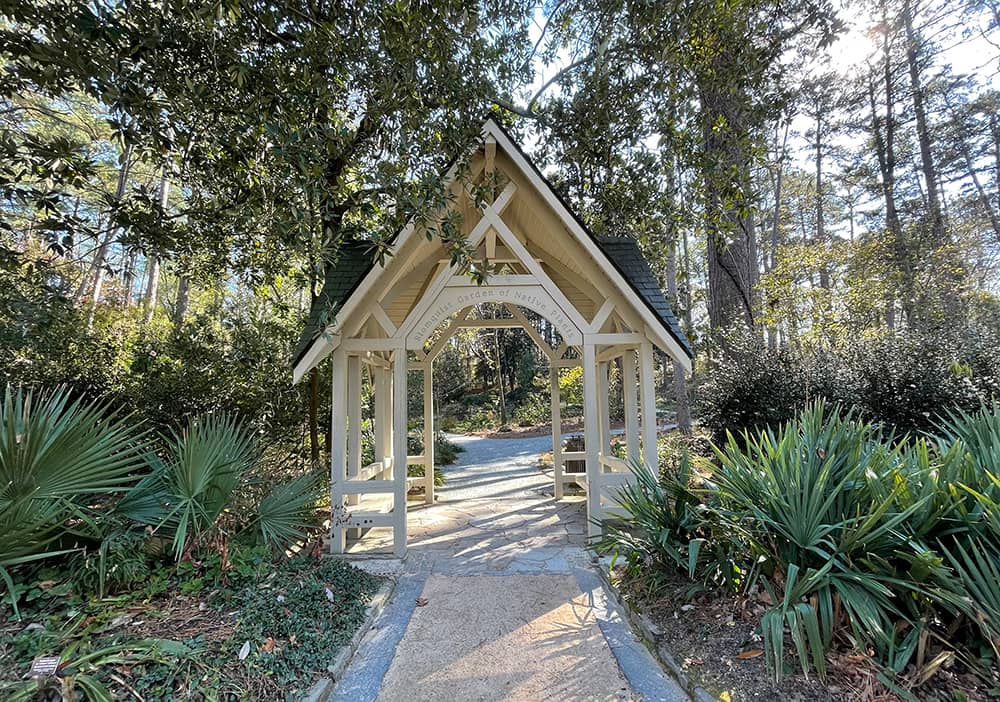Shedding New Light on the Blomquist
by Annabel Renwick, Curator of Blomquist Garden of Native Plants
“Does this path go anywhere?” is a question that was frequently asked during the 10 years I’ve worked in the Blomquist Garden of Native Plants. I’ve watched visitors enter the garden through the charming Arts and Crafts styled gatehouse, only to see them glance around, turn on their heels and walk out, apparently uninterested in the landscape ahead of them.
In the Blomquist we have a fabulous collection of native trees, shrubs and perennials, many of them rare and a substantial number endangered. There are many messages we want to share with our visitors, such as the importance of sustainable gardening and gardening for wildlife, yet if a proportion of visitors are not prepared to even enter the garden, how can we engage?
On becoming curator of the Blomquist Garden in 2018, I decided that one of my first objectives would be to broaden the appeal of this native plant garden to the wider visiting public.
During my first few months, I quietly set out to discover a range of personal opinions people had of the Blomquist. It is clear that this garden is adored by many of our Duke Gardens volunteers and visitors. However, in one conversation someone told me, partially in jest, that they called the Blomquist “the haunted garden.” That “haunted” comment stayed with me, as did a series of other comments relating to the overall feeling of the garden. Did they actually mean they considered the garden to be dark, scary and uninviting? Why was that response such a surprise to me? It’s a known fact that when you are close to something on a daily basis, it becomes normalized and you can overlook the general appearance to only appreciate the deeper beauty and value.
So in spring 2019 I stood at the entrance to the garden, wearing my new curator eyes and carrying the “ haunted garden” comment in my head. I tried to view the garden as if I were a visitor entering for the first time. If I had limited time to visit Duke Gardens, would I want to explore this area or would I continue walking along the Walker Dillard Kirby Perennial Allée and other more popular areas of the Gardens? How were we enticing our guests into the garden?

Using my “new” eyes, I scanned the garden, and I realized that I couldn’t see that far. I was presented with visually impenetrable green walls of southern magnolia (Magnolia grandiflora). Southern magnolia is a native, evergreen, shade tolerant tree and does not naturally “shed” its lower branches like other trees that require more light. There were several groves of these magnolias, each containing eight to 10 individual trees, restricting the natural flow of sunlight and creating a darkened atmosphere throughout the Blomquist.
The Blomquist Garden is 54 years old, and in that time, as with other parts of Sarah P. Duke Gardens, there has been a substantial amount of naturalized vegetation, specifically by the southern magnolia. This tree can grow to 80 feet, supporting a dense canopy up to 40 feet wide, and it can be quite the bully. Few plants can tolerate the dry shade under their canopy, and during the past 50 years these trees have grown inconspicuously between the garden’s specimen trees and shrubs.
In 2019, we decided to systematically begin removing about 60 trees, the majority of them southern magnolias. And the transformation to the garden has been nothing short of incredible.

Now as you enter the garden, towering, cathedral-like pines sway overhead, while the narrow, winding paths usher you through the landscape before disappearing in the distance. Where once the sunlight was blocked by an evergreen cover, it now penetrates through to the woodland floor, filtering through the mixed deciduous canopy and creating playful shadows on the paths. Light has given dimension and depth to the garden, and colors are reflected throughout. The native plant garden now resembles a mature open woodland, rather than a darkened forest.
The presence of light not only has positive impacts on humans’ health and emotions, but it is critical for woodland biodiversity. There have been numerous studies to show that an open deciduous woodland is more biodiverse than densely shaded woods. Light brings warmth to the woodland floor earlier in the spring, and plants respond to light for germination, growth and flowering. In the Blomquist we have already seen the shrubs and perennials respond positively to the newly acquired light. Rhododendrons, many planted in the 1980s and 1990s, are growing thicker and producing many more blooms than before, and perennials not seen for many years have magically reappeared.
It’s now possible for visitors standing at the Blomquist’s entrance to catch glimpses of the various wonderfully designed structures that adorn the landscape—the rooftop of the Piedmont Prairie classroom, for example, or the bird viewing shelter fabricated in the shape of a bird house—drawing them into the garden to explore further and marvel at all the plants rejoicing in their newfound light.
Photos from top: View of the Blomquist Garden of Native Plants before and after the redesign. Earlier photo by Stefan Bloodworth (former curator). Recent photo by current curator Annabel Renwick.
